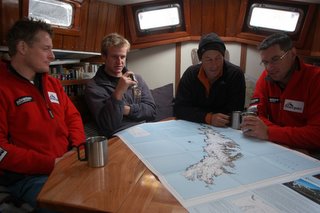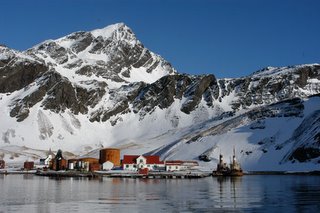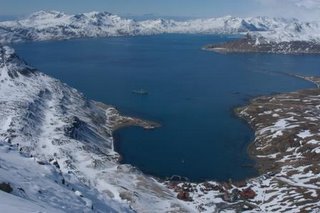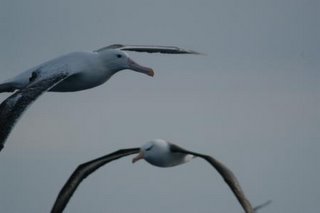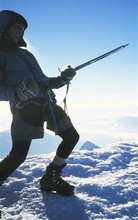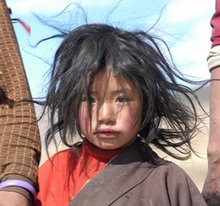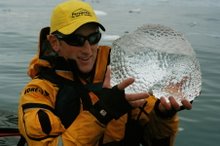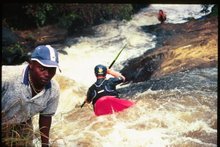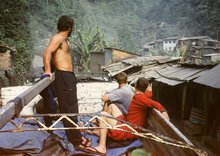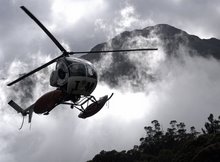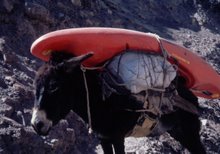Bird Sound is the passage of water separating the mainland of South Georgia from the small islands to the north. In times of bad weather and swell the narrow slot can turn into a turbulent confused passage of crashing whitewater.
A weather window allowed the kayakers to again cover good distance
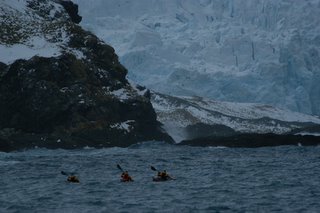 as they rounded the northern bays on route down the exposed southwest coast. Temperatures plummeted encasing the kayaks in ice, sea spray froze on contact with everything.
as they rounded the northern bays on route down the exposed southwest coast. Temperatures plummeted encasing the kayaks in ice, sea spray froze on contact with everything.Our passage through bird sound was uneventful as the prevailing northerly winds calmed. Massive tabular icebergs were more plentiful on the southern coast in varying shapes and sizes.
Holmstrand – 23rd Oct the day involved eight hours of paddling for the boys into a SW breeze continuing the trend of headwinds. All day we moved along rugged coastline, un-charted areas of coast where sea depths are often not known. We kept a watchful eye on the depth sounder, as contact with any un-chartered rock would have had serious repercussions.
Bays and beaches were packed with small blocks of brash ice and huge constricted
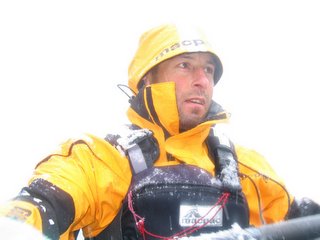 glaciers.
glaciers.The night fell with an amazing light on the mountains and calm winds, yet still bitterly cold.
25th Holmstrand to Ducloz head – distance 27 nautical miles
Our entrance into anchorage at Ducloz head was a real test. Shallow reefs blocked a clear line and sporadic depths and clumps of kelp kept us guessing on the best way in to the protected area of the bay. Most anchorages on the southwest coast had specific protection from only one or two directions, reading weather maps and then predicting the sea conditions and what effect that may have on us should a storm suddenly hit or the weather suddenly come from another direction was our primary concern.

We set the zodiac in the water and set about with a handheld depth sounder trying to find the channel. Northhanger had a minimum depth necessary of 3.6 metres. Depths varied from 8 feet to 25 feet within a few metres either side of the channel and guiding the yacht in was often quite stressful. If things suddenly got really shallow the yacht would back off and try a different approach.
Ducloz head was packed with brash ice and trying anchor lines ashore was a tesing exercise, the zodiac was incredibly difficult to manouver through the ice chunks to attach lines or “springers” to rock bollards.
26th Ducloz head to Diaz Cove – distance 22 nautical miles, again co
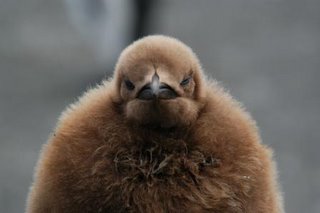 ld conditions, the sun had not shone through for over ten days restricting temperatures to rise above 3 or four degrees. These temperatures combined with winds running off the ice and snow and the wet paddling conditions ensured the kayakers and yacht crew on watch often suffered freezing extremities.
ld conditions, the sun had not shone through for over ten days restricting temperatures to rise above 3 or four degrees. These temperatures combined with winds running off the ice and snow and the wet paddling conditions ensured the kayakers and yacht crew on watch often suffered freezing extremities.27th Oct – 1pm we set off from Diaz Cove on route to the southern most point of South Georgia, Cape Disapointment. Sea depths of 30m+ suddenly dropped out to 10m and we were forced to move cautiously and change direction several times. Watching the sea swell and its movements we looked for piles, lumps and other sea swell movements potentially caused by shallow depths.
As we rounded Cape Disappoinotment the sun finally shone through illuminating icebergs, and the steep faces, gullies and rugged peaks of South Georgia were suddenly in all their glory, we were certainly not disappointed by the spectacle.
Rounding the corner the wind suddenly switched and blew onto our stern and we rode the swell past several bays before cruising up into Drygalski Fiord.
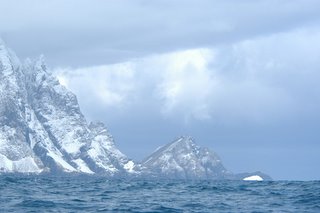
To be continued
Zak Shaw




